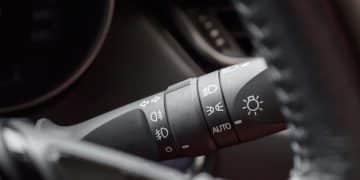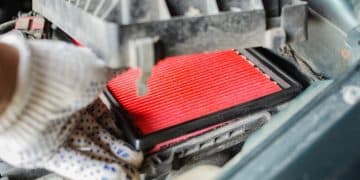Belt and Hose Inspection: Your Guide to Preventing Car Breakdowns
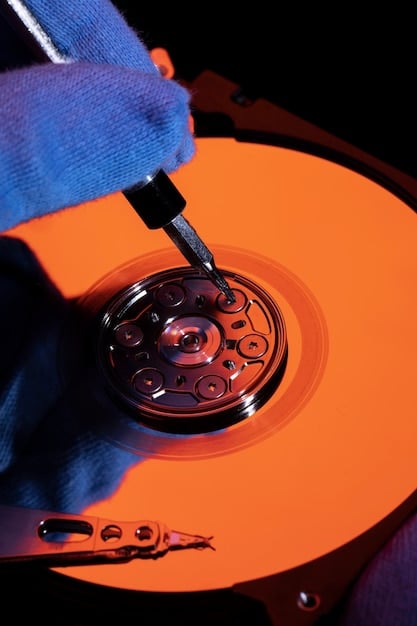
Belt and hose inspection are essential preventative car maintenance tasks that can save you from unexpected breakdowns, ensuring vehicle reliability and safety through regular visual checks.
Performing regular belt and hose inspection is a straightforward yet vital aspect of car maintenance, often overlooked. By identifying potential issues early, you can prevent breakdowns and ensure your vehicle runs smoothly, saving you time and money.
Understanding the Importance of Belt and Hose Inspection
Belts and hoses play critical roles in your vehicle’s operation, from cooling the engine to powering essential components. Regular inspection helps identify wear and tear, preventing costly repairs down the road.
Neglecting these components can lead to overheating, loss of power steering, or even complete engine failure. Understanding their function and condition is key to maintaining your car’s health.
Why Belts and Hoses Matter
Belts and hoses are responsible for the seamless operation of various systems in your car. Here’s a closer look at their importance:
- Engine Cooling: Hoses carry coolant to and from the engine, preventing overheating.
- Power Steering: Belts drive the power steering pump, ensuring smooth and effortless steering.
- Electrical System: The serpentine belt powers the alternator, which charges the battery and runs electrical components.
Consequences of Neglecting Inspection
Ignoring regular belt and hose inspection can lead to several adverse outcomes:
- Breakdowns: Worn belts and hoses can snap or leak, causing immediate breakdowns and leaving you stranded.
- Expensive Repairs: Minor issues that are identified early can turn into major, costly repairs if left unchecked.
- Safety Risks: Failure of critical systems like power steering or brakes can compromise your safety and that of others.
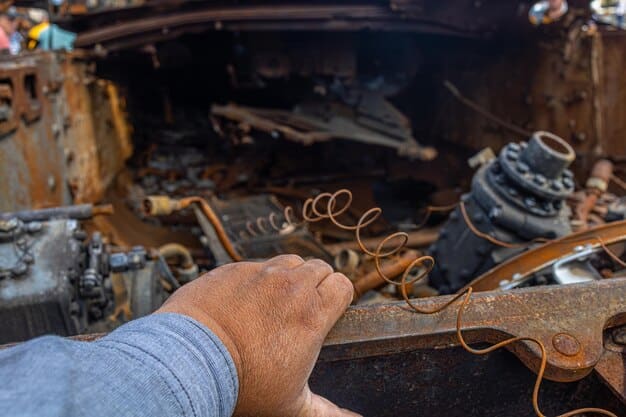
Regular belt and hose inspection is not just about maintaining your car; it’s about ensuring your safety and peace of mind. By staying proactive, you can avoid unexpected and potentially dangerous situations.
Essential Tools for Belt and Hose Inspection
Having the right tools on hand makes the belt and hose inspection process much more effective and efficient. While a comprehensive inspection might require specialized equipment, a basic visual check can be performed with just a few items.
These tools will help you identify potential issues and perform simple maintenance tasks. Having them readily available makes routine checks easier and more convenient.
Basic Inspection Tools
For a basic visual inspection, you’ll need:
- Flashlight: For illuminating dark areas and inspecting hard-to-reach spots.
- Gloves: To protect your hands from dirt and grease.
- Rags: For wiping away dirt and debris to get a better view.
Advanced Inspection Tools
For a more in-depth inspection, consider having these tools:
- Belt Tension Gauge: To measure the tension of belts and ensure they are within the recommended range.
- Hose Clamp Pliers: For safely removing and replacing hose clamps.
- Coolant Pressure Tester: To check for leaks in the cooling system.
With the right tools, you’ll be well-equipped to perform thorough belt and hose inspection, ensuring your vehicle is in optimal condition. Regular use of these tools can help you identify issues early and prevent breakdowns.
Step-by-Step Guide to Visual Belt Inspection
Performing a visual belt and hose inspection might seem daunting, but it’s a straightforward process that anyone can learn. This step-by-step guide will help you identify potential issues and ensure your belts are in good condition.
By following these steps, you can proactively maintain your vehicle and prevent unexpected breakdowns. Regular inspections will become second nature, keeping your car running smoothly.
Preparation
Before you begin, make sure your engine is cool. Locate the belts in your engine compartment and gather your tools, including a flashlight and gloves.
Visual Inspection
Follow these steps for a thorough visual inspection:
- Check for Cracks: Look for cracks along the length and width of the belt. Cracks indicate that the belt is drying out and needs replacement.
- Inspect for Fraying: Check the edges of the belt for signs of fraying, which can weaken the belt’s structure.
- Look for Missing Chunks: Missing chunks of rubber indicate severe wear and the need for immediate replacement.
Additional Checks
Consider these additional checks for a comprehensive inspection:
- Tension: Press down on the belt between pulleys. It should have some give but not feel too loose.
- Alignment: Ensure the belt is properly aligned on the pulleys. Misalignment can cause uneven wear.
- Noise: Listen for squealing or chirping noises while the engine is running, which can indicate a worn or loose belt.
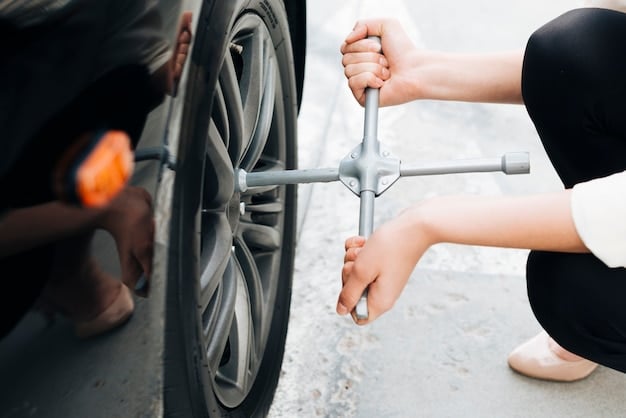
By following this step-by-step guide, you can perform a thorough visual belt and hose inspection and identify potential issues before they lead to breakdowns. Regular checks will keep your car running reliably and safely.
How to Perform a Visual Hose Inspection
Hoses are just as critical as belts for the proper functioning of your vehicle, and regular inspection is essential. This guide will provide you with the steps to perform a visual belt and hose inspection.
Inspecting your hoses regularly will help you identify potential issues early, preventing leaks and breakdowns. Proactive maintenance ensures your vehicle operates efficiently and safely.
Preparation
Ensure the engine is cool before you begin. Locate the hoses in your engine compartment and gather your tools, including a flashlight and gloves.
Visual Inspection
Follow these steps to inspect your hoses:
- Check for Swelling: Look for areas where the hose appears swollen, which indicates weakening of the rubber.
- Inspect for Cracks: Check the surface of the hose for cracks, especially near the connections.
- Look for Leaks: Check for signs of coolant or fluid leaks near the hose connections.
Additional Checks
Consider these additional checks for a comprehensive inspection:
- Squeeze the Hose: Squeeze the hose to check for soft spots or areas that feel spongy.
- Check Clamps: Ensure the hose clamps are tight and not corroded.
- Feel for Hardening: Hoses that feel hard and brittle are likely to fail soon.
By following these steps, you can perform a thorough visual belt and hose inspection and identify potential issues before they lead to breakdowns. Regular checks will keep your car running reliably and safely.
Common Issues Found During Belt and Hose Inspection
Knowing the common issues that can arise during belt and hose inspection is crucial for effective maintenance. Identifying these problems early can prevent serious damage and costly repairs.
Understanding the common types of wear and tear helps you stay proactive in maintaining your vehicle. Regular inspections allow you to address issues promptly, ensuring your car remains reliable.
Belt Problems
Here are some common problems found during belt inspection:
- Cracks: Cracks indicate that the belt is drying out and losing its flexibility.
- Fraying: Fraying edges weaken the belt and can lead to premature failure.
- Missing Chunks: Missing pieces of rubber indicate severe wear and the need for immediate replacement.
Hose Problems
Common hose issues include:
- Swelling: Swollen areas indicate that the hose is weakening and may burst.
- Cracks: Cracks in the hose can lead to leaks and reduced performance.
- Leaks: Leaks can cause loss of coolant or other fluids, leading to overheating or other issues.
By knowing these common issues, you can effectively perform visual belt and hose inspection and address potential problems before they escalate. Regular maintenance is key to keeping your vehicle in top condition.
Preventative Measures and Maintenance Tips
Preventative measures and maintenance tips are essential for prolonging the life of your belts and hoses. Regular care can help you avoid unexpected breakdowns and keep your vehicle running smoothly.
By following these tips, you can maintain your belts and hoses in optimal condition, saving you time and money in the long run. Proactive maintenance ensures your car remains reliable and safe.
Regular Cleaning
Keep your belts and hoses clean to prevent premature wear. Periodically wipe them down with a damp cloth to remove dirt and grime.
Proper Tension
Ensure your belts have the correct tension. Too loose, and they can slip; too tight, and they can wear out prematurely. Refer to your vehicle’s manual for the recommended tension.
Use Quality Products
When replacing belts and hoses, always use high-quality parts that meet or exceed the manufacturer’s specifications. Quality products last longer and provide better performance.
By implementing these preventative measures and maintenance tips, you can extend the life of your belts and hoses, ensuring your vehicle remains reliable and safe. Regular care is a worthwhile investment in your car’s longevity.
| Key Point | Brief Description |
|---|---|
| 🔍 Visual Inspection of Belts | Check for cracks, fraying, and missing chunks to identify wear. |
| 💧 Visual Inspection of Hoses | Look for swelling, cracks, and leaks to ensure proper function. |
| 🛠️ Use Quality Replacement Parts | When replacing belts and hoses, opt for high-quality parts for better performance and longevity. |
| 🌡️ Cooling System Check | Regularly check coolant levels and inspect the radiator cap to prevent overheating and hose damage. |
Frequently Asked Questions (FAQ)
▼
It’s recommended to inspect your belts and hoses at least every six months or during every oil change. Regular checks can help catch issues early.
▼
Signs of a failing belt include cracks, fraying, missing chunks, squealing noises, and visible wear. Any of these indicate the need for replacement.
▼
Signs of a failing hose include swelling, cracks, leaks, soft spots, and hardening. If you notice any of these, it’s time to replace the hose.
▼
Replacing belts and hoses can be a DIY task if you have some mechanical knowledge. However, if you’re unsure, it’s best to consult a professional mechanic.
▼
Regular inspection prevents breakdowns, identifies minor issues before they become major, costly repairs, and ultimately ensures your safety on the road.
Conclusion
Performing routine belt and hose inspection is an essential part of vehicle maintenance. By understanding the importance of these components and following a regular inspection schedule, you can prevent breakdowns, save money, and ensure your car remains safe and reliable. So, make it a habit to check your belts and hoses regularly – your car will thank you!

